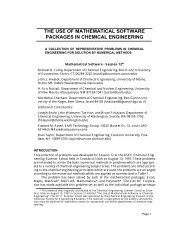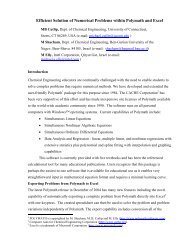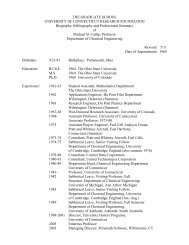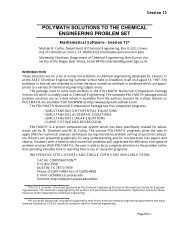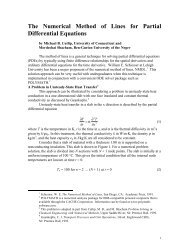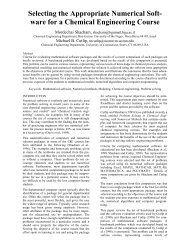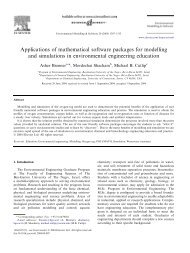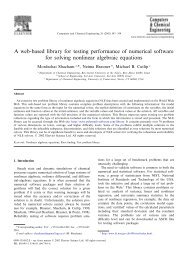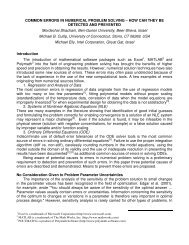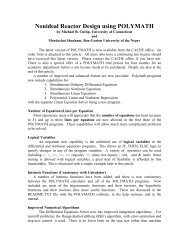Maple Solutions to the Chemical Engineering Problem Set
Maple Solutions to the Chemical Engineering Problem Set
Maple Solutions to the Chemical Engineering Problem Set
You also want an ePaper? Increase the reach of your titles
YUMPU automatically turns print PDFs into web optimized ePapers that Google loves.
Reaction Equilibrium for Multiple Gas Phase Reactions<br />
We begin by creating a list of component identities and <strong>to</strong> calculate <strong>the</strong> number of components.<br />
> components:=[A,B,C,D,X,Y,Z]; nc:=nops(components);<br />
Next, we create a list of reactions:<br />
> Reactions:=[R1,R2,R3];<br />
components := [ A, B, C, D, X, Y, Z]<br />
nc := 7<br />
Reactions := [ R1, R2, R3 ]<br />
Each reaction may be expressed as a <strong>Maple</strong> equation:<br />
> Reaction[R1] :=A+B=C+D;<br />
> Reaction[R2] := B+C=X+Y;<br />
> Reaction[R3] :=A+X=Z;<br />
Reaction := A + B = C + D<br />
R1<br />
Reaction := B + C = X + Y<br />
R2<br />
Reaction := A + X = Z<br />
R3<br />
The s<strong>to</strong>ichiometric cofficients can be deduced from <strong>the</strong> set of reactions as follows:<br />
> for r in Reactions do<br />
for i in components do<br />
nu[i,r]:=coeff(lhs(Reaction[r])-rhs(Reaction[r]),i);<br />
od: od:<br />
print(nu);<br />
table([<br />
( Z, R3 ) = -1<br />
( Y, R2 ) = -1<br />
( X, R1) = 0<br />
( A, R2) = 0<br />
( B, R3) = 0<br />
( X, R3) = 1<br />
( D, R2) = 0<br />
( C, R1 ) = -1<br />
( Z, R2 ) = 0<br />
( Y, R1 ) = 0<br />
( B, R2) = 1<br />
( C, R3 ) = 0<br />
( Y, R3 ) = 0<br />
( X, R2) = -1<br />
( D, R1) = -1<br />
( A, R1) = 1<br />
( A, R3) = 1<br />
Page 20



